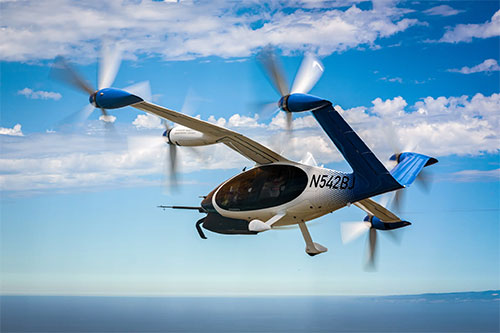
If we are to believe the good news, Joby has made a regional-type flight powered only by hydrogen in one of their prototypes.
I believe this to be true but the exact circumstances and the results of their endeavor bear some scrutiny.
Joby completes landmark 523-mile hydrogen-electric flight
Why is Joby engaged in a hydrogen conversion of their uncertified aircraft prototype? And, what configuration did they fly?
As soon as I read the press release and the gushing article parroting the press release there was one omission that I picked up on. I wonder if you all saw the same thing, or missed the same thing.
There was no interview with the pilot telling us how easy and quiet the hydrogen system is. How the change to the aircraft was an improvement and his view of how hydrogen-fueled aircraft are going to revolutionize air mobility for the ordinary plebeian.
As is normal there was no mention of the weight at which the aircraft flew, the useful weight or the reserve that they ended up with at the end of the historical journey.
However, the weight may be immaterial as the volume consumed by the hydrogen system removes any volume capacity for a passenger, payload or even a pilot.
The press release says: (Joby) today announced it has successfully flown a first-of-its-kind hydrogen-electric air taxi demonstrator 523 miles, with water as the only by-product.
Looking at the location of Marina, California it is safe to assume that they flew a remotely piloted/semi autonomous aircraft with the cabin jammed full of experimental technology over the ocean in a circle at peak L/D for as long as possible.
This is an interesting achievement but in no way demonstrates that this is a viable solution for regional air travel – unless you only want to send small boxes of toothpicks 500 miles across the country.
Pictures are available of the hydrogen capable prototype:

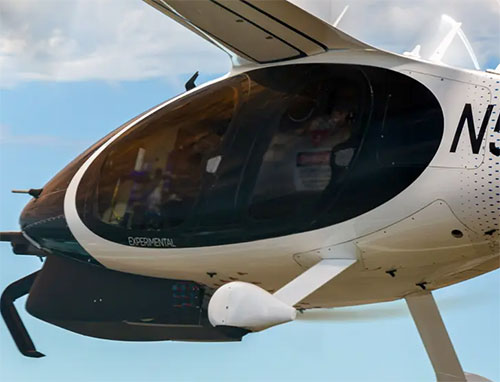
Compared to the normal cabin configuration they seem to have lost some useful volume:
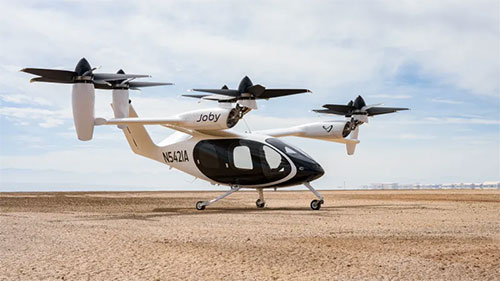
As I have pointed out, the energy density of batteries sucks, but the actual mass density of hydrogen sucks. To make any hydrogen-powered aircraft work you need to consume a large amount of volume with the hydrogen.
As you can see the hydrogen tank takes up much of the internal volume, and the fuel cell and other additional equipment appear to consume much of the remaining cabin volume.
So this means Joby has a prototype of a flying machine that can transport low-volume items for cargo. Possibly some Pez dispensers or a carton of cigarettes. While producing only water as a by-product (if you ignore the process of generating hydrogen).
What was the point of this flight? Let’s look at the share price:
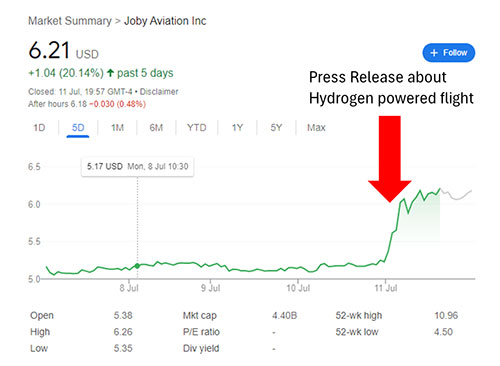
If you look at their market cap over time it went from $5bn to almost $8bn when press release was issued:
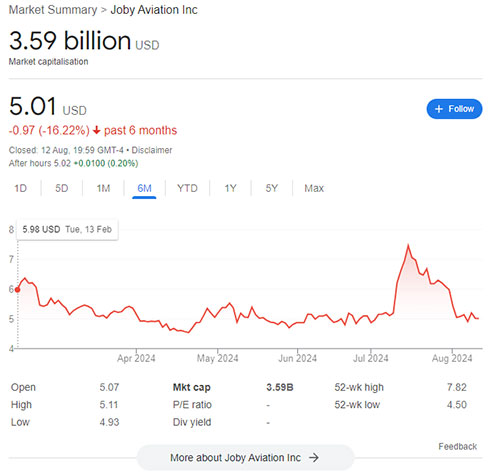
But the euphoric cocaine high of a scintillating yet commercially pointless event quickly wore off like a, well, cocaine high.
So this was a great piece of publicity that provided a small amount of temporary relief for their shareholders.
You can read the latest Joby shareholder report here:
https://joby-site.cdn.prismic.io/joby-site/ZrNfh0aF0TcGIvxV_JobyQ22024ShareholderLetter.pdf
Where is eVTOL going to end up with the pointless publicity stunts and the endless promise of being in service two years from the current date no matter when that date is?
Comment On This Post